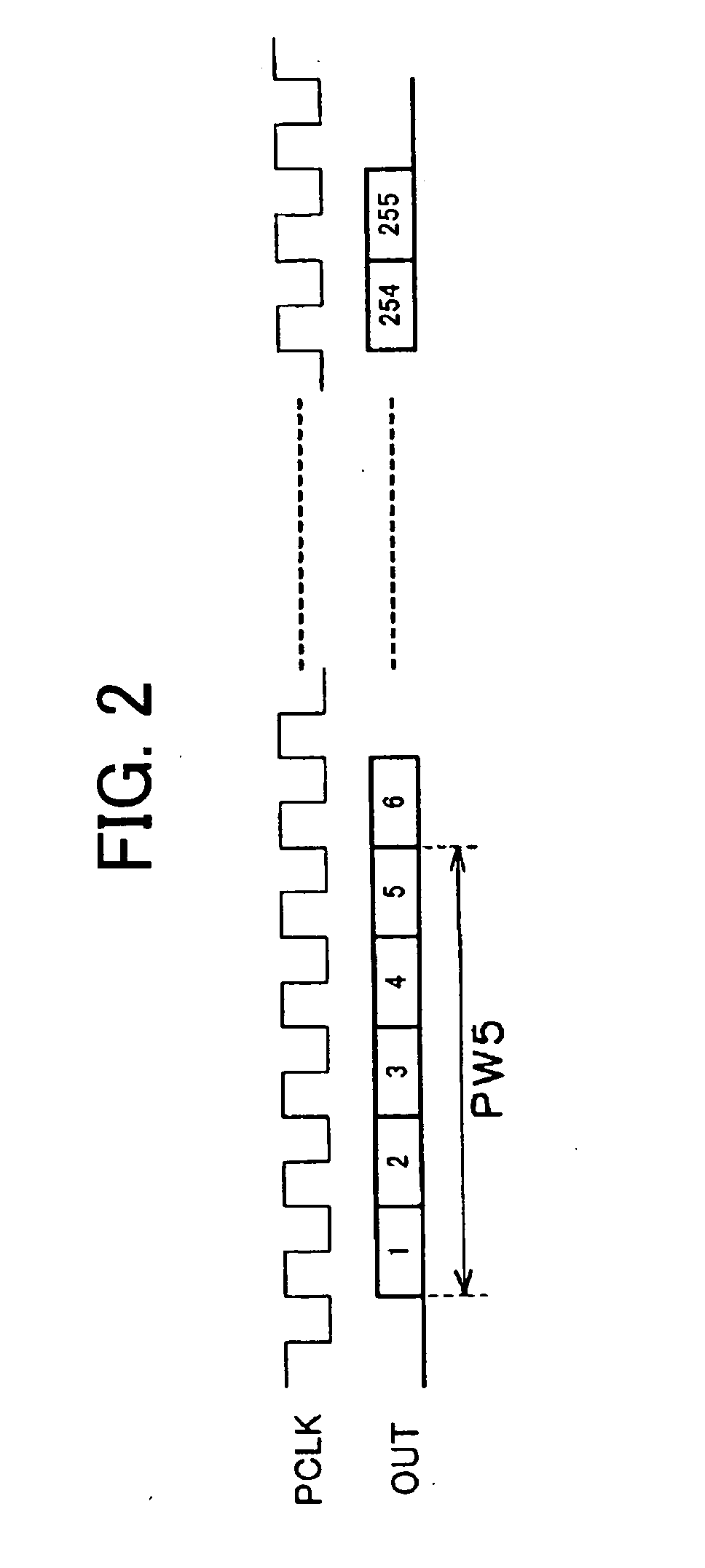Drive control apparatus and drive control method for display panel
- Summary
- Abstract
- Description
- Claims
- Application Information
AI Technical Summary
Benefits of technology
Problems solved by technology
Method used
Image
Examples
first embodiment
(Composition)
First, the basic operation about the drive method of the matrix panel of the first embodiment will be described.
FIG. 1 shows a matrix panel having matrix wiring of 480 rows·640×3 (RGS) columns.
A pixel 1001 of a matrix panel (display panel) 1 is constructed containing a modulation device such as a cold cathode device and the modulation device is formed on a substrate like glass. In case of a display matrix panel using the cold cathode device, a substrate (not shown) like glass which is coated with fluorescent material and a high voltage is applied on is provided so as to oppose the pixel 1001 so that the fluorescent material emits light due to electrons emitted from the cold cathode device.
Reference numeral 1002 denotes column wiring (modulation wiring) and reference numeral 1003 denotes row wiring (scanning wiring). A physical intersection between the column wiring 1002 and the row wiring 1003 is insulated and a cold cathode device constituting the pixel 1001 is...
second embodiment
Next, the second embodiment will be described.
According to the first embodiment, the condition about the frequency modulation of the modulation clock (PCLK) is indicated about the difference in luminance between adjacent rows, which is a problem in subjective evaluation. An object of the second embodiment is to reproduce the luminance data and gradation characteristic of luminance faithfully. Because the structure of the image display unit and the operation of the unnecessary radiation of the second embodiment are equal to the first embodiment, a description thereof is omitted.
(Tolerable Condition of Image Quality)
According to the second embodiment of the present invention, the modulation clock (PCLK) is obtained by frequency-modulating the source clock at random like the first embodiment. That is, according to this example, the cycle of the PCLK is selected at random to reduce the level of its harmonics and its frequency is changed.
FIG. 7a shows a source clock and a modulat...
third embodiment
Next, the third embodiment of the present invention will be described.
In the first embodiment and second embodiment, the condition for the frequency modulation of the modulation clock (PCLK) about a difference in luminance between adjacent rows or relative to the luminance of the source clock, which is a problem in subjective evaluation, is indicated. According to the third embodiment, the aforementioned difference in display luminance is not set below a common tolerable value but below a tolerable value which is different depending on each gradation level on all gradation levels such as n=1, 2, 3, . . . 255 except 0 in order to obtain a further excellent image quality. Because the structure of the image display unit and the unnecessary radiation reduction method are the same as the first embodiment, description thereof is omitted.
(Tolerable Condition of Image Quality)
A case where a gamma compensated image signal (a signal raised to the 0.45 power preliminarily) is quantized ...
PUM
 Login to View More
Login to View More Abstract
Description
Claims
Application Information
 Login to View More
Login to View More - R&D
- Intellectual Property
- Life Sciences
- Materials
- Tech Scout
- Unparalleled Data Quality
- Higher Quality Content
- 60% Fewer Hallucinations
Browse by: Latest US Patents, China's latest patents, Technical Efficacy Thesaurus, Application Domain, Technology Topic, Popular Technical Reports.
© 2025 PatSnap. All rights reserved.Legal|Privacy policy|Modern Slavery Act Transparency Statement|Sitemap|About US| Contact US: help@patsnap.com



